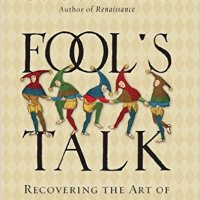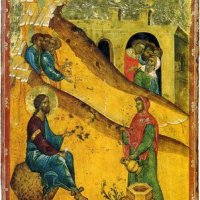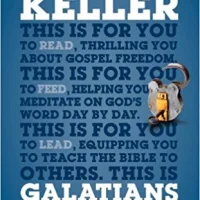 I remember the first time I resolved to read the Bible–the whole Bible. I was a sophomore in college and I realized that as I was publicly calling myself a Christian, people in my dorm started to ask me Bible questions. I didn’t like the idea of answering questions about a book that I said I believed but had never read from cover to cover. So I set out in earnest to read the Bible from Genesis to Revelation…Old Testament to New Testament. It was very interesting, even exciting to read the stories of Genesis and Exodus. These were books that my parents and childhood teachers had made very familiar. But when I got to Leviticus, I got bogged down and never made it to the next book (sound familiar?).
I remember the first time I resolved to read the Bible–the whole Bible. I was a sophomore in college and I realized that as I was publicly calling myself a Christian, people in my dorm started to ask me Bible questions. I didn’t like the idea of answering questions about a book that I said I believed but had never read from cover to cover. So I set out in earnest to read the Bible from Genesis to Revelation…Old Testament to New Testament. It was very interesting, even exciting to read the stories of Genesis and Exodus. These were books that my parents and childhood teachers had made very familiar. But when I got to Leviticus, I got bogged down and never made it to the next book (sound familiar?).
The Bible is a wonderful book. It is God’s book–his word of revelation to us. But it is not always easy reading. Portions of it are harder to understand than others. The stories are palatable to readers, but the laws and instructions for ancient rituals are difficult because they are so foreign. Many Christians wonder, “How in the world is Leviticus relevant to my Christian walk? After all, didn’t Jesus fulfill the ceremonial law as our great High Priest?” (Again, sound familiar?)
These are good questions, and they are capably answered by Tremper Longman III in his book Immanuel in Our Place: Seeing Christ in Israel’s Worship. This easy-to-read book is in the excellent Gospel According to the Old Testament series by P&R Publishing, which aims to be “a series of studies on the lives of Old Testament characters, written for laypeople and pastors, and designed to encourage Christ-centered reading, teaching, and preaching of the Old Testament.” Immanuel in Our Place is a little different since it does not look at the gospel from the perspective of the life of an OT Bible character, but from the perspective of OT worship, especially worship mediated by the priests. Much of its subject matter deals with those passages in Leviticus that tend to lose our attention for lack of understanding their background and purpose.
The book is divided into four parts:
- Sacred Space
- Sacred Acts
- Sacred People
- Sacred Time
These categories adequately summarize Israel’s worship by explaining the tabernacle/temple, the various offerings, the priesthood, and Israel’s sacred feasts centered on Sabbath.
Despite its OT subject matter, this is not a book about Judaism. The author is informed by Jewish scholarship, but he is thoroughly Christian in his interpretation and application. His purpose is to show how Israel’s worship reveals the person and work of Jesus Christ in all his glory. Longman succeeds in accomplishing this.
This book may be used in various ways. It would make an excellent devotional study on OT worship and how Christian worship today should be informed by it. With discussion questions at the end of each chapter, it may be used as a small group study. The endnotes explain more technical details and provide a good starting point for others books to pursue further study.
Longman’s interpretations and proposals are mostly standard for the evangelical and Reformed Christian, but he does suggest we ought to consider how Christ has transformed Sabbath-keeping and how that should make us more humble about our convictions of puritan Sunday Sabbath observance. Most Christians will continue to debate this important topic. This book will help us not to demonize Christians who come to different conclusions about Sabbath-keeping as Christians.
To understand the OT ceremonial law from a Christ-centered perspective, I know of no better place to start than Immanuel in Our Place.













